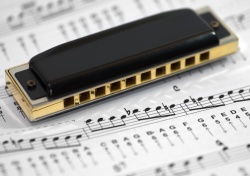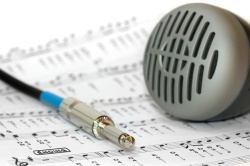How Do I Know I’m Bending In Tune?
 If I catch you bending, I’ll saw your legs right off..
If I catch you bending, I’ll saw your legs right off..
It’s a fair question often posed by newcomers to the harp, regardless of any previous musical experience. Basically, we all want to know we’re doing something right the first time we try it. Folks often arrive at our workshops under the assumption they’ve nailed their bends, when they actually haven’t completed their journey.
The process starts by quantifying the task. There are twelve regular draw/blow bends on a 10 hole diatonic. 1D’, 2D’, 2D”, 3D’, 3D”, 3D”‘, 4D’, 6D’, 8B’, 9B’, 10B’ and 10B”.
Next we need to learn the skills necessary to achieve each bend. On first encounter each reed has its own distinct response. In time you will grow used to, and learn to accommodate, these idiosyncrasies. You can find comprehensive instructions for playing draw bends and blow bends in our Harp Skills section (top menu).
Knees up , knees up, can’t get a breeze up..
Once you know where all your front line bends are, you’ll start to appreciate how important it is to play them accurately without scooping. You may even start working on the next level of bends – the overblows and overdraws that turn our diatonic instrument into a fully chromatic one. But try not to get too hung up on all this. You may develop OCD (obsessive correct-bending disorder). Enjoyment should still remain king.
Knees up Mother Brown!
That being said, a badly bent note falls firmly into the ear trash category. So how can we best measure our accuracy of pitch when bending reeds? Well first you need to hear yourself. This is difficult from behind your blues burger. Use your PC, mobile phone, a dictaphone or any means possible to record yourself. You’ll be amazed, and even shocked, by what you discover. Again – relax. Nobody is immune. And I mean nobody. It’s the same experience as hearing your voice recorded for the first time. You never ever sound the way you think you do.
Next accept that no matter how good you get, the draw bends in 3D will always sound weaker than their neighbours. Give yourself a break. There are three bends packed into a very tight space, so it’s hardly surprising. The differentials are tiny. 3D will always be the Achilles Heel of the short harp. Embrace the imperfection and flaunt it. But try to use that camouflage vibrato sparingly.
Now, before we get down to brass tacks, let’s take a short break and listen to one of the masters of reed bending at work. Check out Jerry Portnoy’s version of Misty, from his Home Run Hitter album. Then on to some solutions.
The genetically modified solution
Grab your anorak and let’s get all scientific. Buy an electronic tuner from a music shop. Guitarists use them all the time. Add a mic and check the needle on the meter when you’re bending. This way you will know you are as pitch-perfect as Julie Andrews. Alternatively log on to the internet and check out Bendometer. Then again, why not go the whole hog? Really annoy people on the train and buy an application for your mobile phone.
The homogenised solution
 Compare your bends with notes played on another instrument such as a piano or guitar. If you’ve never used one, you may need someone to help locate the correct keys or frets. But help may not always be available and the other instrument may need tuning first.
Compare your bends with notes played on another instrument such as a piano or guitar. If you’ve never used one, you may need someone to help locate the correct keys or frets. But help may not always be available and the other instrument may need tuning first.
The fair trade solution
Invest in a good harmonica book and CD which you can pause and repeat at the appropriate section. I recommend Dave Barrett’s range of tutorials and Mick Kinsella’s Blues Harp From Scratch
for this.
The traditional solution
Buy a range of tuning forks or a pitch pipe. Or else just use another harp in the appropriate key to compare with. A pitch pipe is recommended as it is easy to get hold of and will provide all the tones you’re looking for.
The organic solution
And the recommended Harp Surgery solution….. keep it natural. Use your Britney Spears. You’d recognise a bum note in Do-Re-Mi if you eard it right? It’d stick out like Lederhosen made with curtain material. So pick some tunes that need good use of bends and judge for yourself whether or not you are in tune. Try Yankee Doodle Dandy. For that notorious three bend, we also recommend a tune called Duck Drawl, written and pioneered by Dave Michelsen and Norman Ives.
Beefing up those bends
Periodically we post items designed to help strengthen particular bends. You can check these out through the following series of links..
Beefing up the 4D bend – start with this one!

Pingback: Wanderin’ Wilf’s Harp Surgery | Perfecting that 2 draw bend - Low Rider
Thanks for the great website. I’ve been reading bits a pieces over the last few days and its really helped with my first steps towards the art of bending. I can also heartily recommend the bendometer program mentioned in the article.
Keep up the good work.
Cheers,
Rich